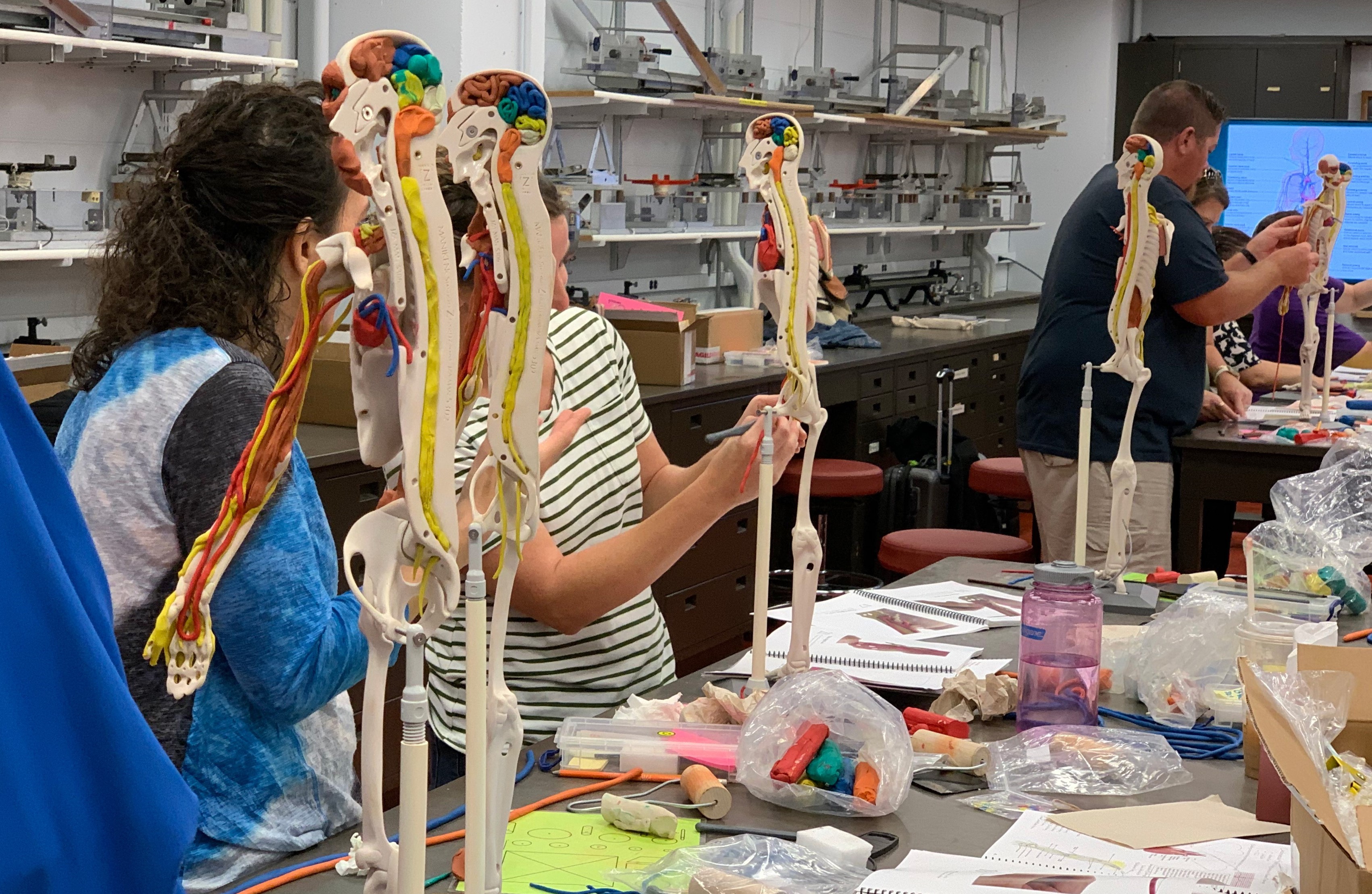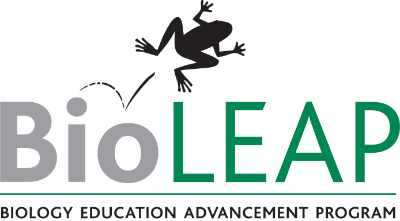
The BioLEAP Classroom Grant is an award for educators and school administrators in the United States who are working to replace animal dissection in their classrooms. Awards are available for up to $1,000 worth of non-animal dissection tools.
The application period for the 2024 BioLEAP Classroom Grant is now closed, please check back when applications re-open in January 2025.
Thank you to all our applicants, award winners will be notified by March 29, 2024.
Applications Closed2023 BioLEAP Classroom Grant Winners
Read about the winners of the 2023 BioLEAP Classroom Grants to learn about the types of projects we sponsor with our award. We chose 11 teacher grant recipients from across the U.S. who demonstrated dedication to replacing or reducing the use of animal dissection in their classrooms. These grants will impact approximately 870 students during the 2023-24 school year.
Alston Brown
Hampton Roads Academy, Virginia
Alston will use the grant funds to purchase four mounted pig models from Eisco Labs and eMind Pig dissection software from Expandable Minds to replace the dissection of fetal pigs in his 9th grade biology class. He decided to apply for the grant because he was uncomfortable with the normalization of vivisection in schools and wanted his students to experience a safe, chemical free learning environment.
Annie Spickard
Lincoln Avenue Academy, Florida
Annie will use the grant funds to purchase 53 Dissect-It Plus Frog kits to replace the dissection of preserved frog specimens in her 5th fifth-grade science class. She decided to apply for a grant because her school promotes student agency as a guiding philosophy, and she wanted to give her students the choice to conduct a hands-on, odorless, animal- free dissection.
Alana Trammell
Prairie Lea School, Texas
Alana will use the grant funds to purchase the eMind software suite to replace dissections in her 9th and 10th grade biology classes. She decided to apply because funding options at her school are limited, and she wanted to introduce her students to ethical lab work while meeting science education standards.
Luis Huertas
Castlemont High School, California
Luis will use the grant funds to purchase human, bird, and reptile comparative anatomy models and software that will help his 10th grade biology class to create 3D printed organs. He decided to apply because he doesn’t believe sacrificing animals for education is necessary, and he wants his students to gain experience using new technology like 3D printing.
Lisa Norris
South Carroll Special School District, Tennessee
Lisa will use the grant funds to purchase four Syndaver frogs to replace the dissection of animal specimens in her high school biology class. Her school has already begun the transition to alternatives by purchasing an Anatomage table. The BioLEAP Classroom grant will allow her to fulfill the hands-on requirements for anatomy lab without harming animals.
Brian Tennal
Clinton Sr. High, Missouri
Brian will use the grant funds to purchase paper origami models to replace the dissection of sheep organs in his 10-12th grade biology classes. He long viewed specimen dissection as a “‘necessary evil,”’ but since learning about alternatives, he no longer sees the harvesting of dissection specimens and the exposure of students to toxic chemicals as justifiable.
Gabrielle Flud
Catoosa High School, Oklahoma
Gabrielle will use the grant funds to purchase Anatomy and Physiology Revealed software and a human skeleton model for her anatomy and physiology course, and frog manikins for her biology course. In the past her students have dissected octopus, pigs, perch, grasshoppers, and sharks, but she does not see the point of these dissections, since the primary focus of the course is human anatomy. She was drawn to the fact that the yearly subscription prices for virtual anatomy tools are cheaper than re-purchasing specimens each year.
Ashley Johnson
Malvern High School, Arkansas
Ashley will use the grant funds to purchase paper pig dissection models from Getting Nerdy with Mel and Gerdy, two Altay fetal pig dissection models, and an Altay male and female rat model to replace the dissection of fetal pigs and rats in her high school biology classes. Johnson decided to apply because several of her students ask not to participate in dissections each year, and several more appear very hesitant during the labs, compromising their learning. By switching to non-animal models, she hopes that none of her students will be feel left out of educational opportunities.
Stephanie Leonhardt
Green High School, Ohio
Stephanie will use the grant funds to purchase 4D interactive models and the Anatomy in Clay Learning System to replace animal dissections in her high school biology classes. She decided to apply because she wants to increase the focus on human anatomy. She has also noticed that her students struggle with the use of animals as dissections specimens.
Maria Berezniak
J. Sterling Morton East High School, Illinois
Maria will use the grant funds to purchase vertebrate dissection paper model bundles from Getting Nerdy with Mel and Gerdy for the new high school zoology course she is designing. Berezniak decided to apply because she is an animal advocate and wanted to provide her students with the opportunity to dissect without harming animals.
Emilia Odife
Lake Mary Prep, Florida
Emilia will use the grant funds to purchase the BioDigital Online Anatomy App and human histology slides for her 12th grade Human Anatomy and Physiology course. Since her first year of teaching, Emilia has been provided with pre-ordered specimens by the school. Her hope is to demonstrate that the learning tools purchased with the grant will prove the efficacy of non-animal anatomy tools and help make her case that animal- free anatomy labs should be funded by the school.
